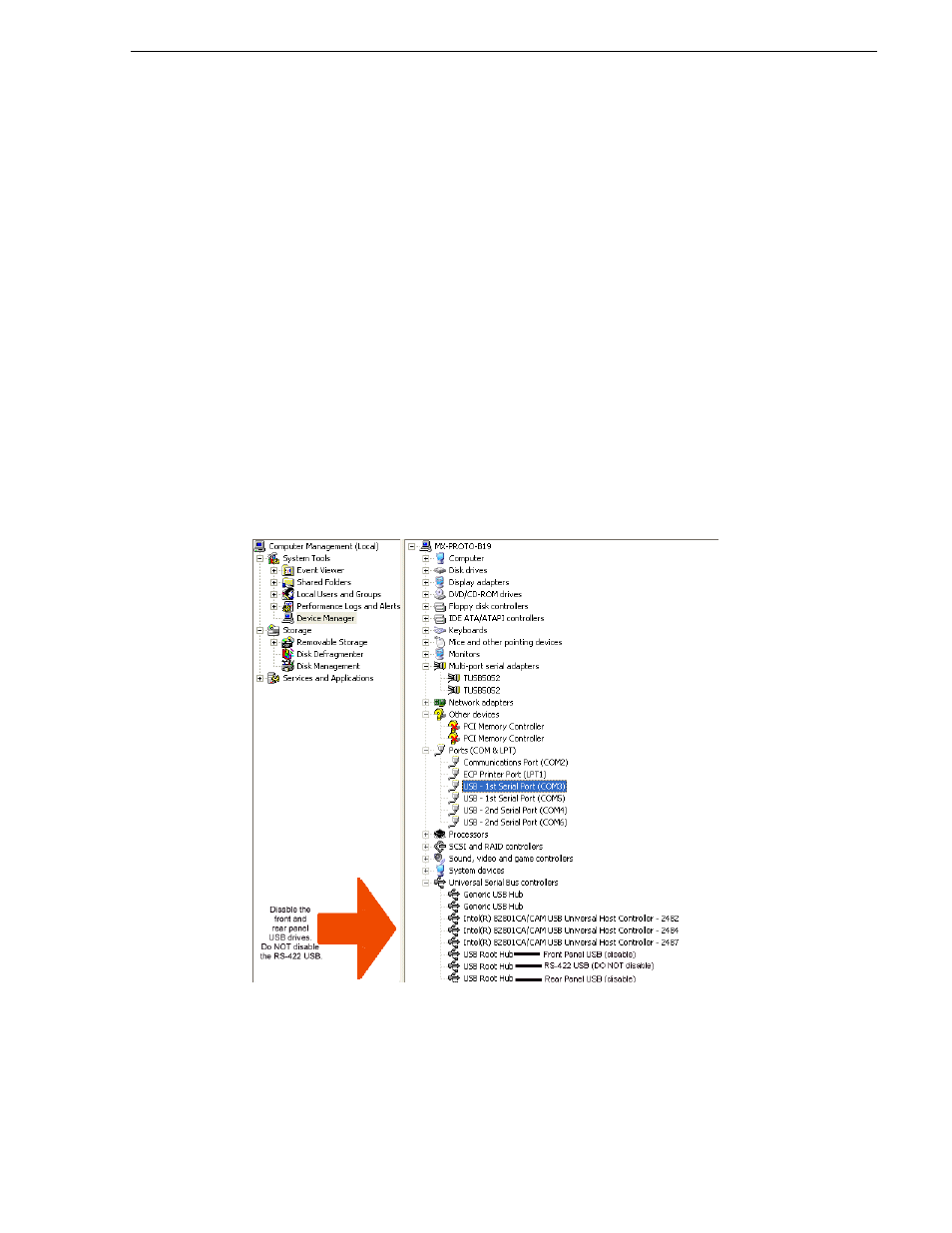Enabling and disabling the usb ports – Grass Valley K2 Media Client System Guide Oct.10 2006 User Manual
Page 103

September 7, 2006
K2 Media Client System Guide
103
Enabling and disabling the USB ports
firewall should allow incoming HTTP (TCP ports 80 and 280) connections for
client and configuration connections to the K2 system inside the private network.
Additionally, ports should allow incoming packets so requests to the Proxy NAS
can be properly processed. The port that needs to be open is port 445 for TCP and
UDP for Windows and SAMBA shares. If your site’s policies require that these
port numbers change, contact Grass Valley support for assistance.
• Access to the K2 system should be controlled in order to limit the likelihood of
malicious or unintended introduction of viruses.
• The front and rear USB ports of the K2 system should normally be disabled; they
should only be used by Windows administrators. (Be careful not to disable the
RS-422 USB.) For more information, see
“Enabling and disabling the USB ports”
.
Enabling and disabling the USB ports
Grass Valley recommends that the front and rear USB ports be disabled. This protects
the K2 Media Client from exposure to unauthorized files. Do not disable the RS-422
USB. The following illustration shows which USB ports should be disabled in
Windows Device Manager.
Only the Windows administrator, working locally, can enable or disable USB ports.
To enable a USB port, right-click on the USB device in Windows Device Manager
and select
Enable
. You cannot enable the K2 Media Client USB port via a control
point PC.
